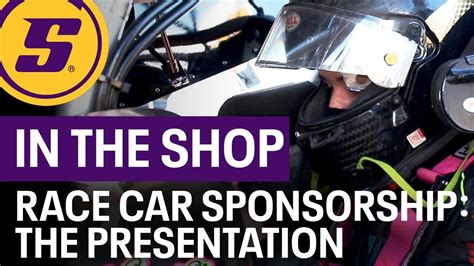Automotive Sponsorships: Your Guide to Sponsorship Mastery
Automotive sponsorships offer a powerful way to connect with a passionate and engaged audience. Whether you're a small business looking for brand visibility or a large corporation aiming for market dominance, understanding the nuances of automotive sponsorship can significantly impact your success. This comprehensive guide will equip you with the knowledge and strategies needed to navigate the world of automotive sponsorships and achieve your marketing objectives.
What are the different types of automotive sponsorships?
Automotive sponsorships span a broad spectrum, each offering unique opportunities and challenges. They can range from sponsoring individual race car drivers or teams to partnering with automotive events like car shows or rallies. Here are some key types:
- Racing Sponsorships: This is perhaps the most well-known type, encompassing everything from Formula 1 to local dirt track racing. Sponsorships can cover individual drivers, entire teams, or even specific racing series.
- Event Sponsorships: Partnering with car shows, rallies, or automotive festivals provides broad exposure to a targeted audience passionate about cars.
- Vehicle Wraps: A cost-effective option, vehicle wraps transform vehicles into mobile billboards, providing consistent brand visibility wherever the vehicle travels.
- Team Sponsorships: Supporting a specific racing team, whether professional or amateur, allows for strong brand association and community engagement.
- Charity Automotive Events: Sponsoring charity events related to cars, such as fundraising drives or car auctions, combines brand promotion with social responsibility.
How to choose the right automotive sponsorship opportunity?
Selecting the right sponsorship opportunity requires careful consideration of your target audience, budget, and marketing goals. Here's a step-by-step approach:
- Define Your Target Audience: Who are you trying to reach? Understanding your ideal customer's demographics, interests, and media consumption habits is crucial for selecting the right sponsorship.
- Set Your Budget: Automotive sponsorships can range from relatively inexpensive to extremely costly. Establish a realistic budget that aligns with your marketing resources.
- Research Potential Sponsorships: Investigate various sponsorship opportunities within the automotive industry, considering factors like reach, engagement, and alignment with your brand values.
- Negotiate Terms: Carefully review the sponsorship agreement, including deliverables, payment schedules, and exclusivity clauses.
- Measure and Analyze Results: Track key performance indicators (KPIs) such as brand awareness, website traffic, and sales to assess the effectiveness of your sponsorship.
What are the benefits of automotive sponsorships?
Automotive sponsorships offer a plethora of benefits for businesses of all sizes. These include:
- Increased Brand Awareness: Associating your brand with high-profile racing events or popular car shows dramatically increases your visibility among a large and engaged audience.
- Enhanced Brand Image: Sponsoring events or teams that align with your brand values can strengthen your brand image and build positive associations.
- Targeted Marketing: Automotive sponsorships allow for highly targeted marketing, reaching specific demographics passionate about cars and motorsports.
- Lead Generation: Sponsorships can generate valuable leads, providing opportunities to connect directly with potential customers.
- Networking Opportunities: Automotive sponsorships provide opportunities to network with key industry players, including potential partners and investors.
What are the common mistakes to avoid in automotive sponsorships?
While automotive sponsorships offer tremendous potential, several common pitfalls can undermine their effectiveness. Avoid these mistakes:
- Poorly Defined Goals: Without clearly defined objectives, it's difficult to measure the success of your sponsorship.
- Lack of Alignment: Ensuring that the sponsorship aligns with your brand values and target audience is critical.
- Inadequate Budget Allocation: Underestimating the costs associated with a sponsorship can lead to disappointing results.
- Ignoring Measurement: Failing to track key performance indicators makes it difficult to assess the ROI of your sponsorship.
- Lack of Engagement: Simply sponsoring an event is not enough; actively engage with the audience to maximize the impact of your sponsorship.
How to measure the ROI of an automotive sponsorship?
Measuring the return on investment (ROI) of an automotive sponsorship requires a strategic approach that combines quantitative and qualitative data. Track these key metrics:
- Brand Awareness: Monitor changes in brand awareness through surveys, social media monitoring, and website analytics.
- Website Traffic: Track website traffic from the sponsorship campaign to assess its impact on online engagement.
- Lead Generation: Monitor the number of leads generated through the sponsorship, along with their conversion rates.
- Sales Growth: Analyze changes in sales to determine the direct impact of the sponsorship on revenue.
- Social Media Engagement: Track social media mentions, shares, and interactions to gauge the campaign's reach and impact.
By carefully considering these factors and employing a strategic approach, businesses can leverage the power of automotive sponsorships to achieve significant marketing success. Remember that a successful automotive sponsorship requires meticulous planning, execution, and measurement to ensure a positive return on your investment.

